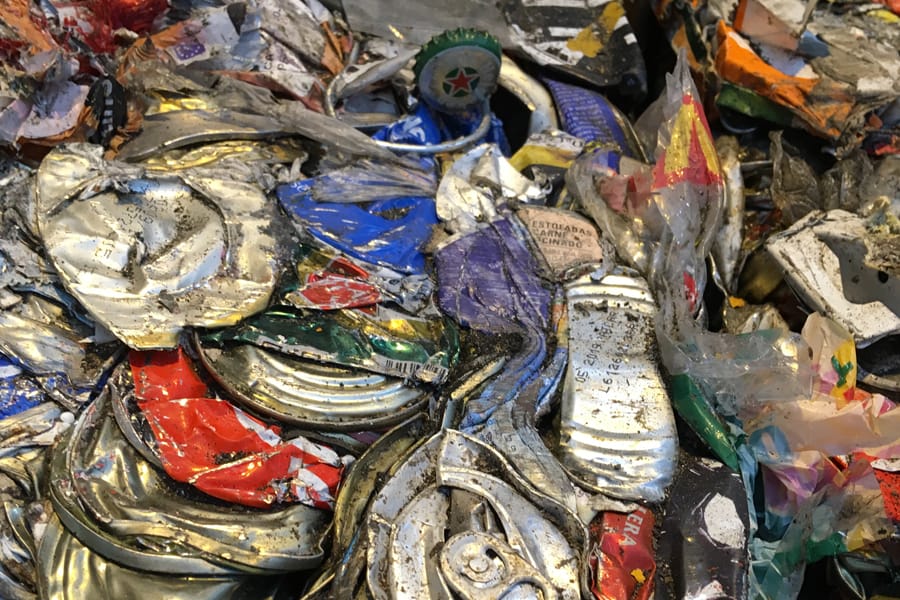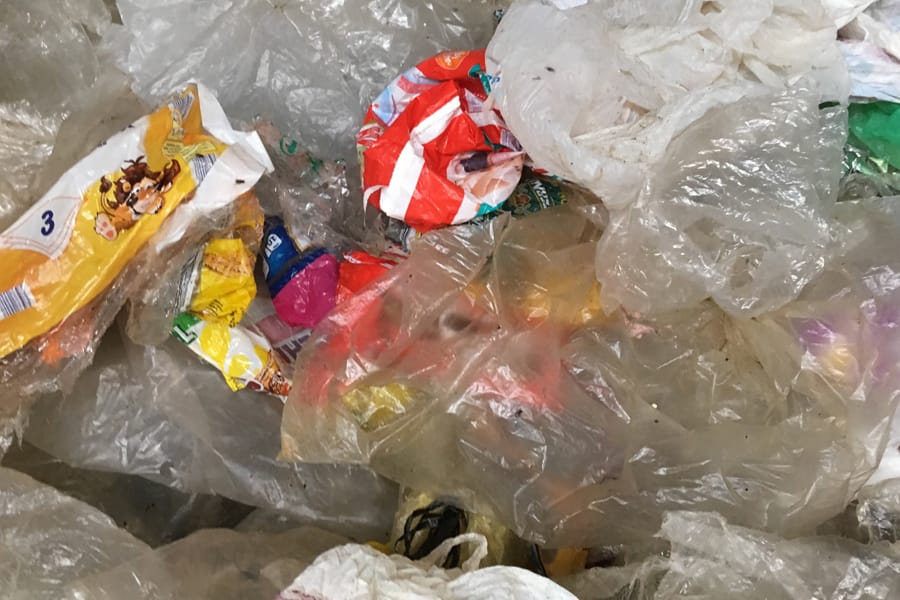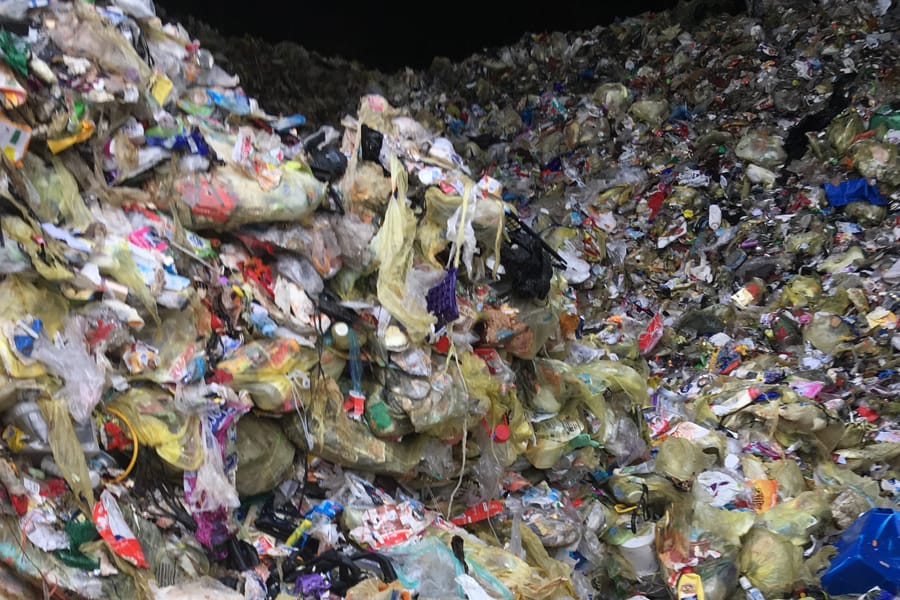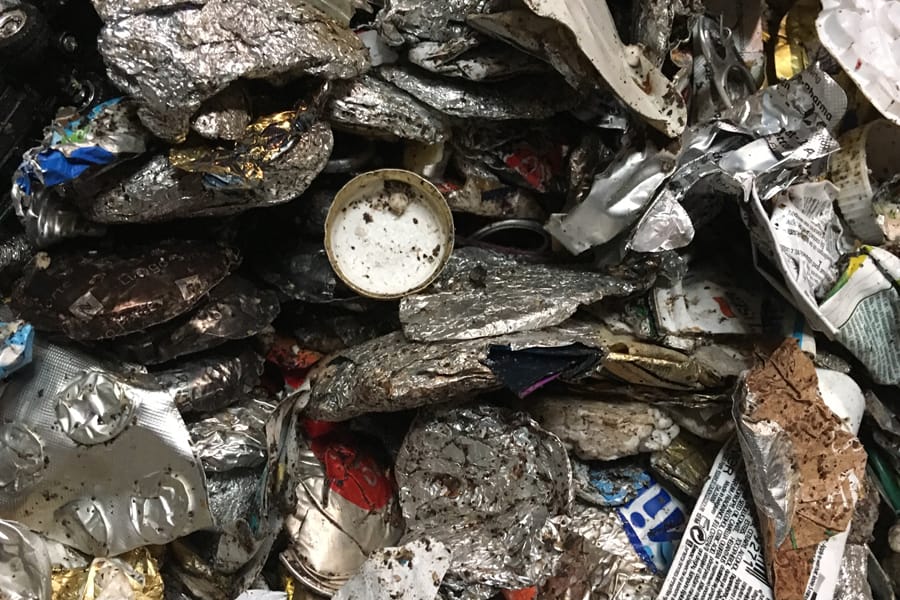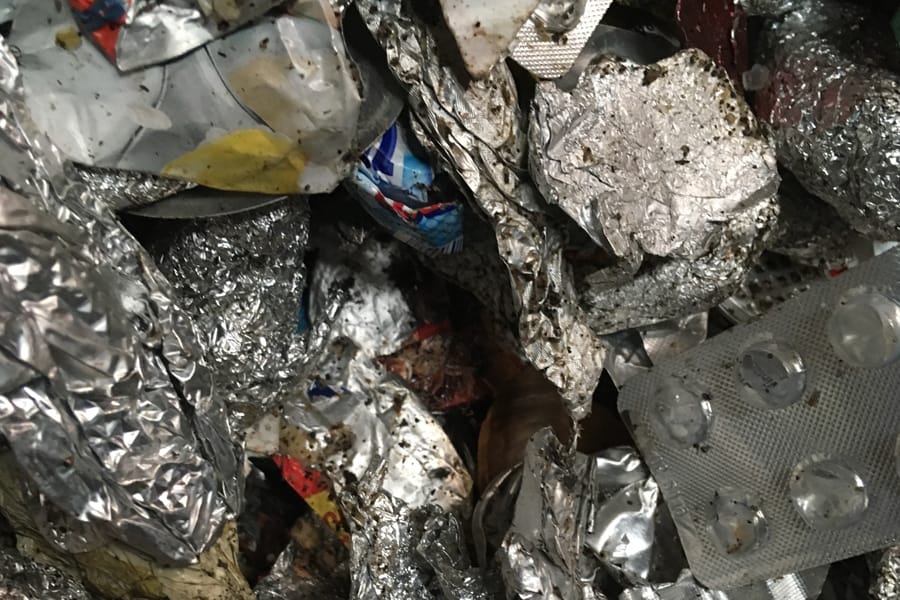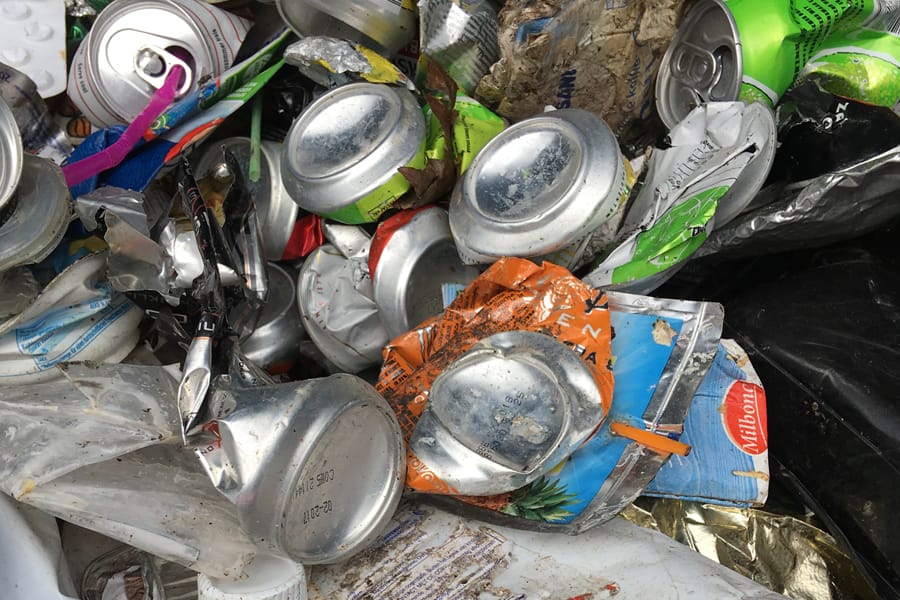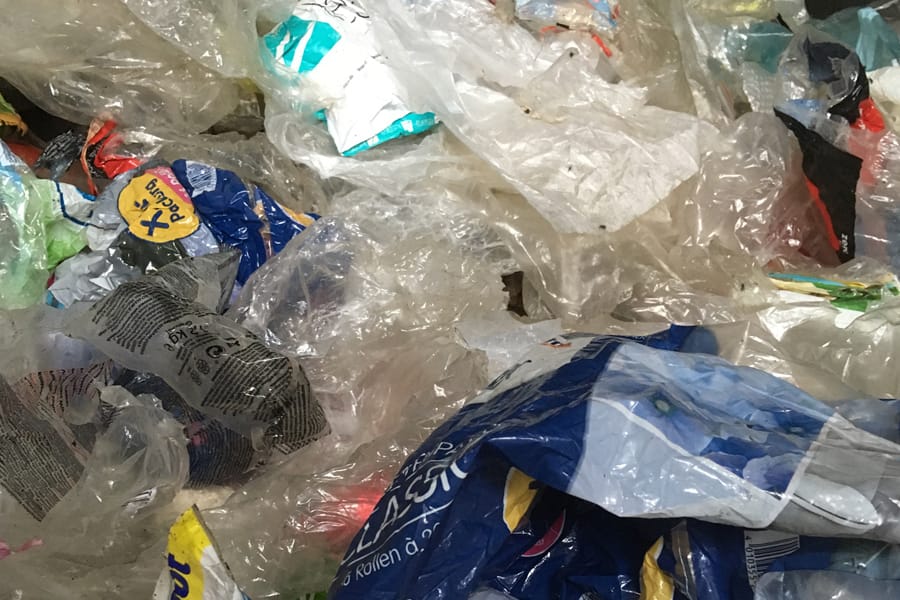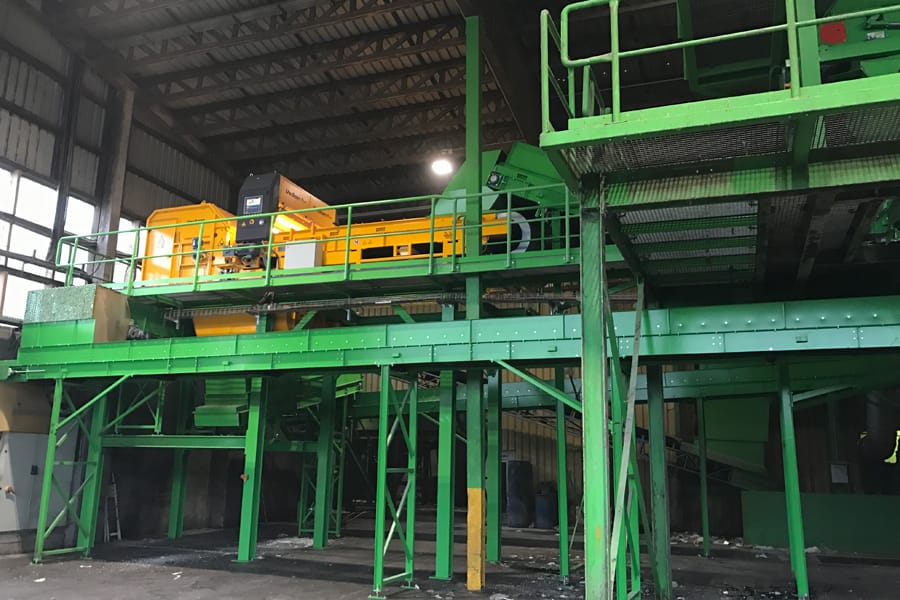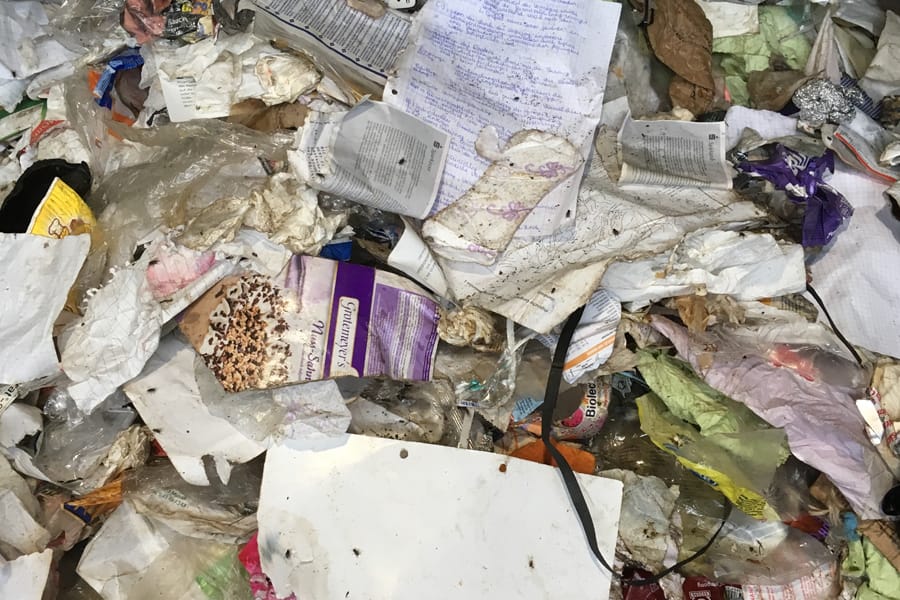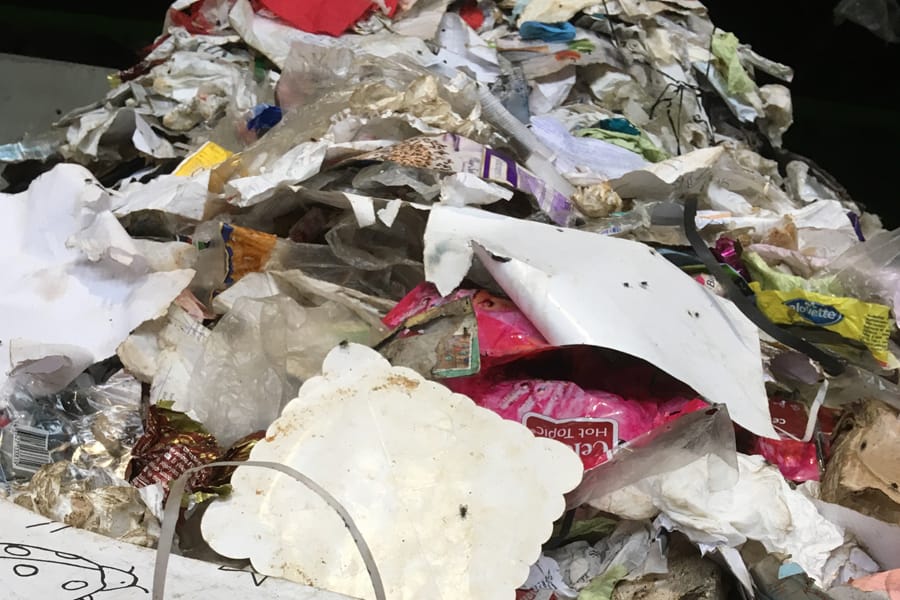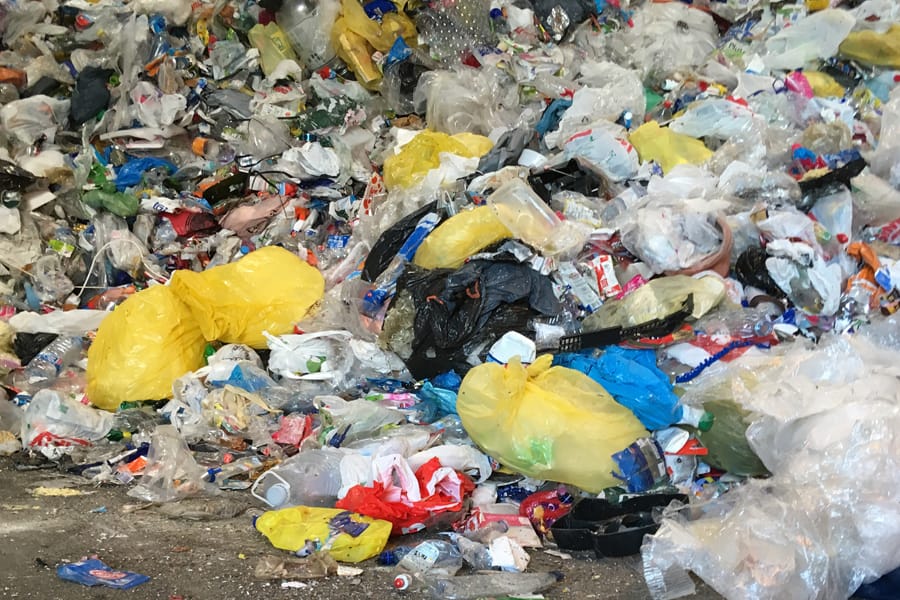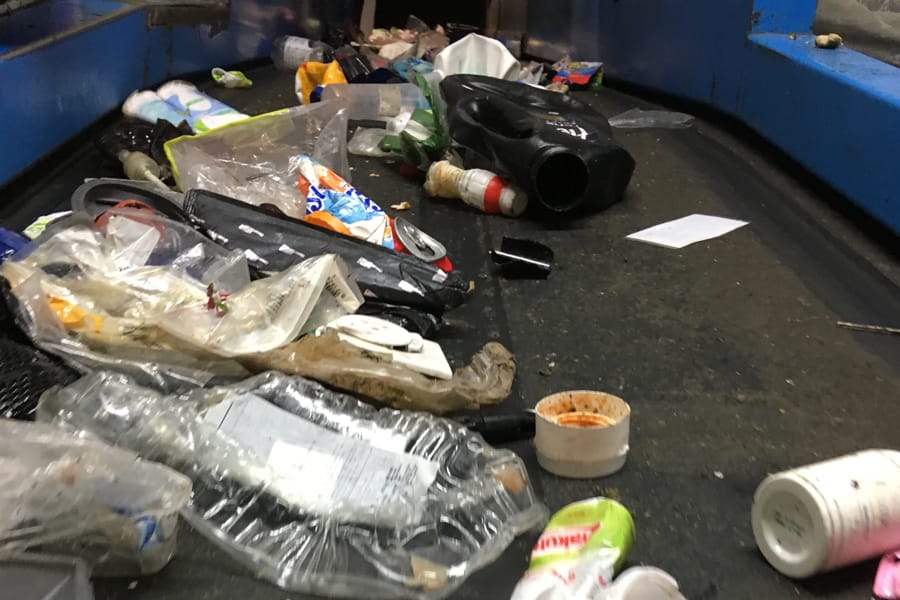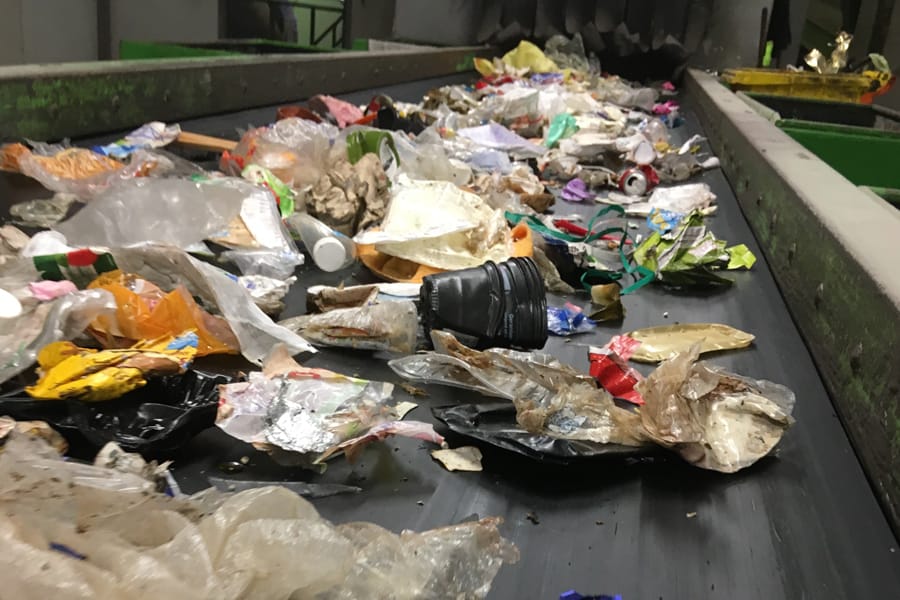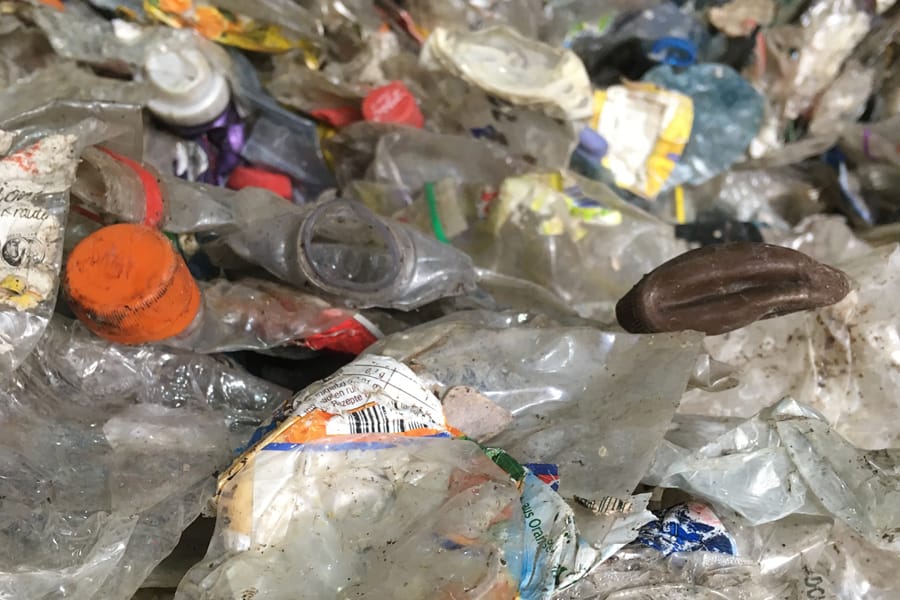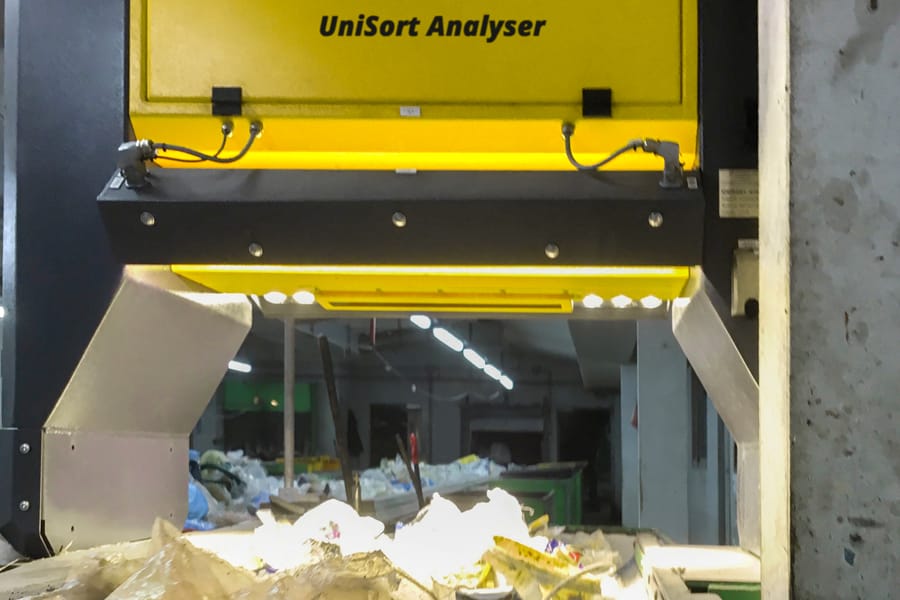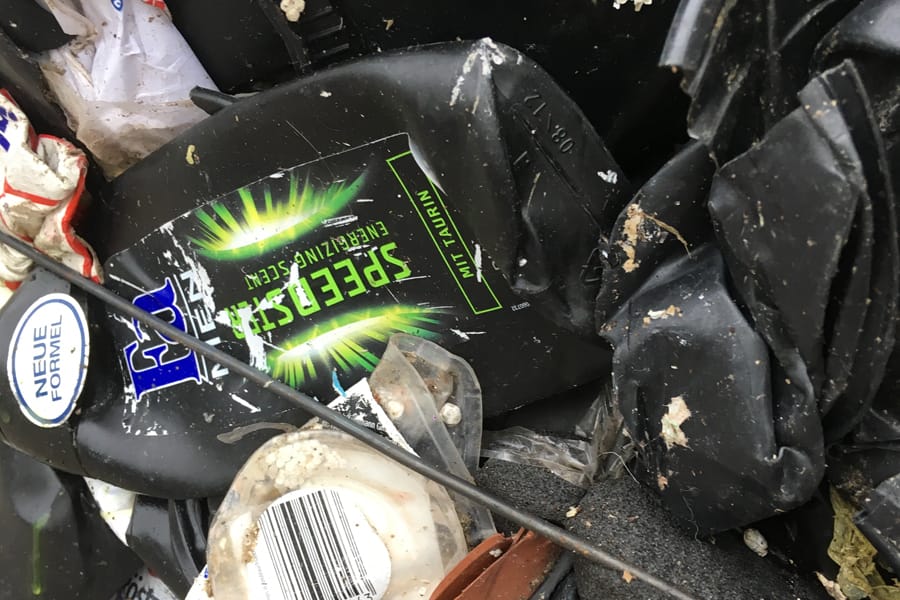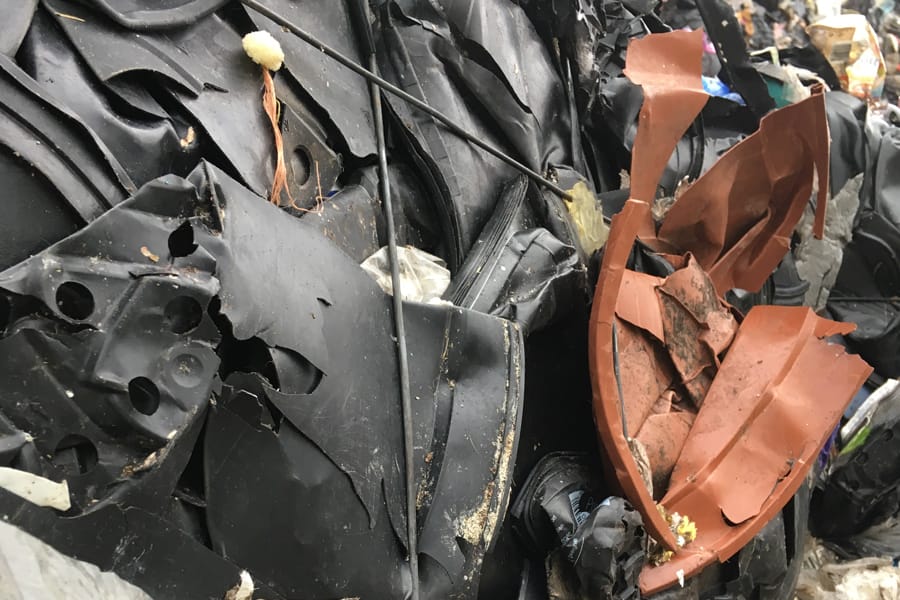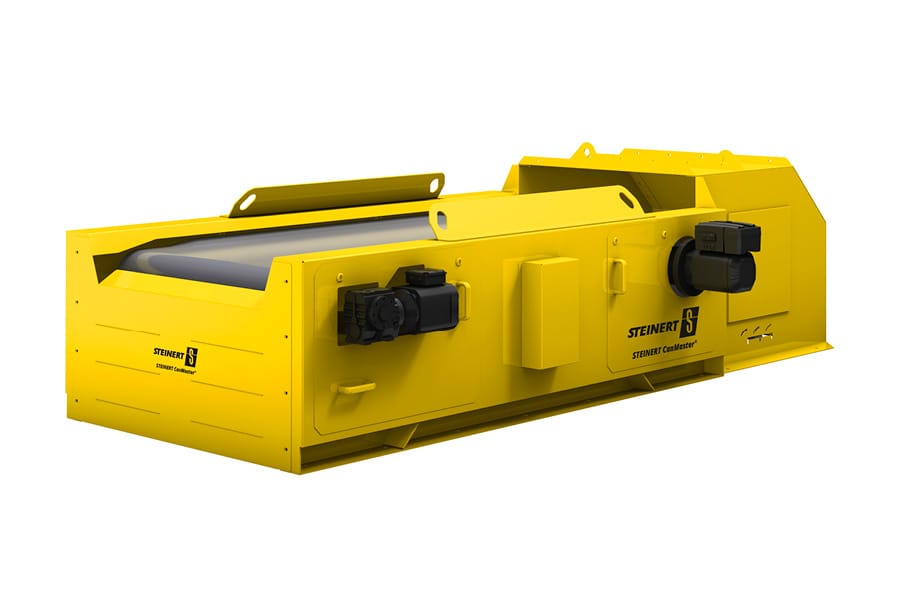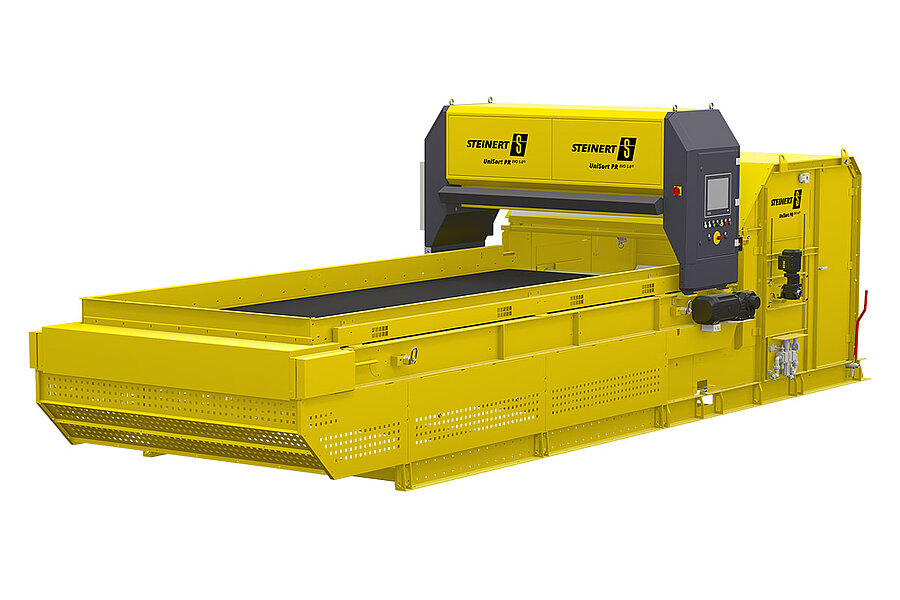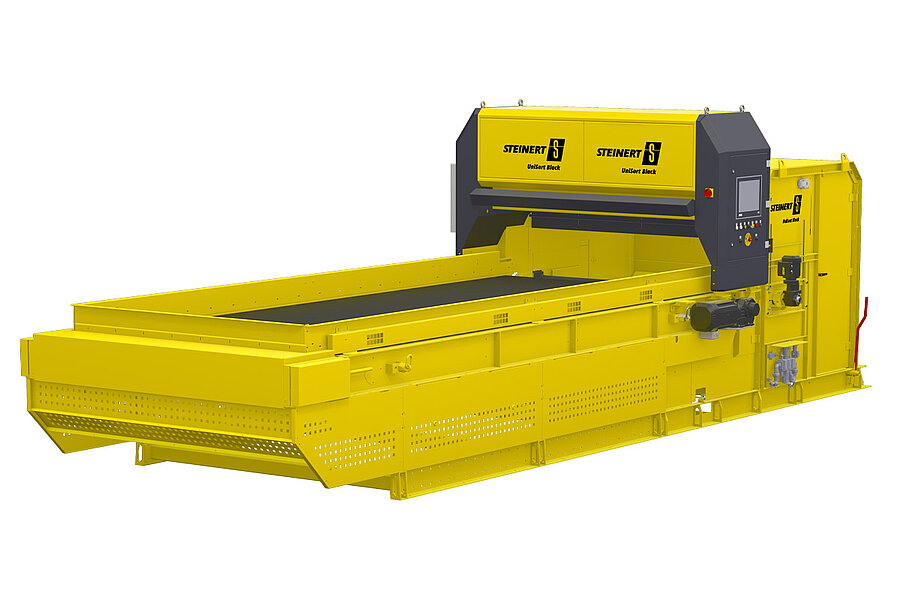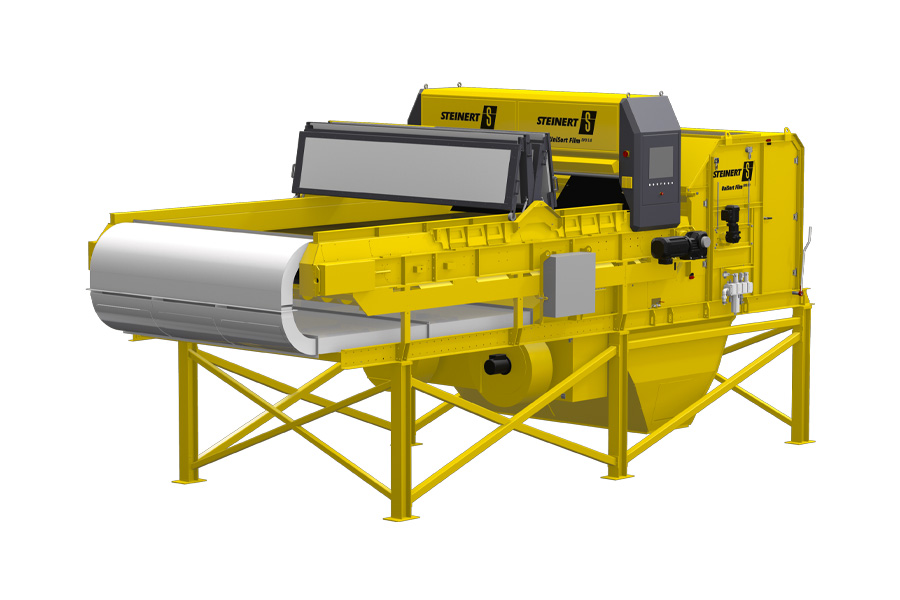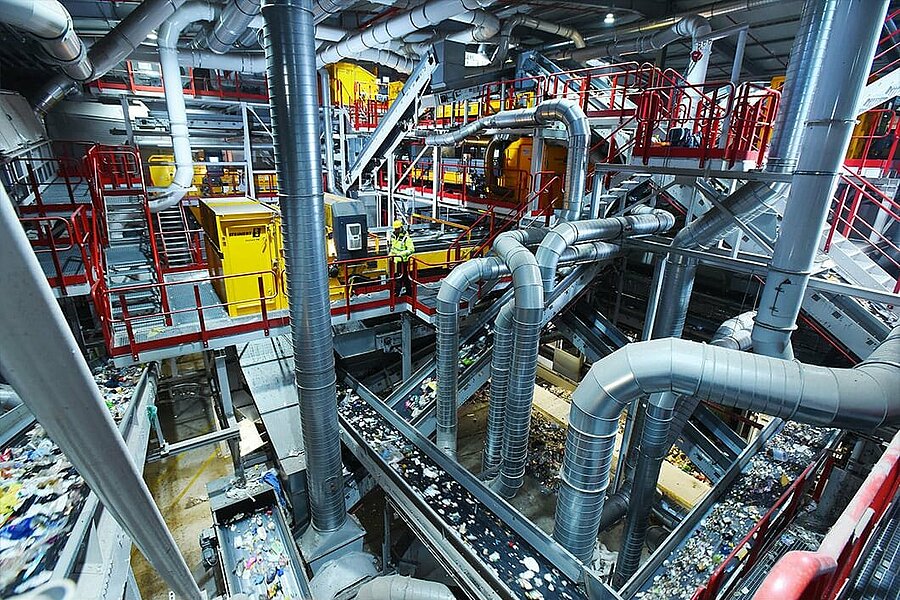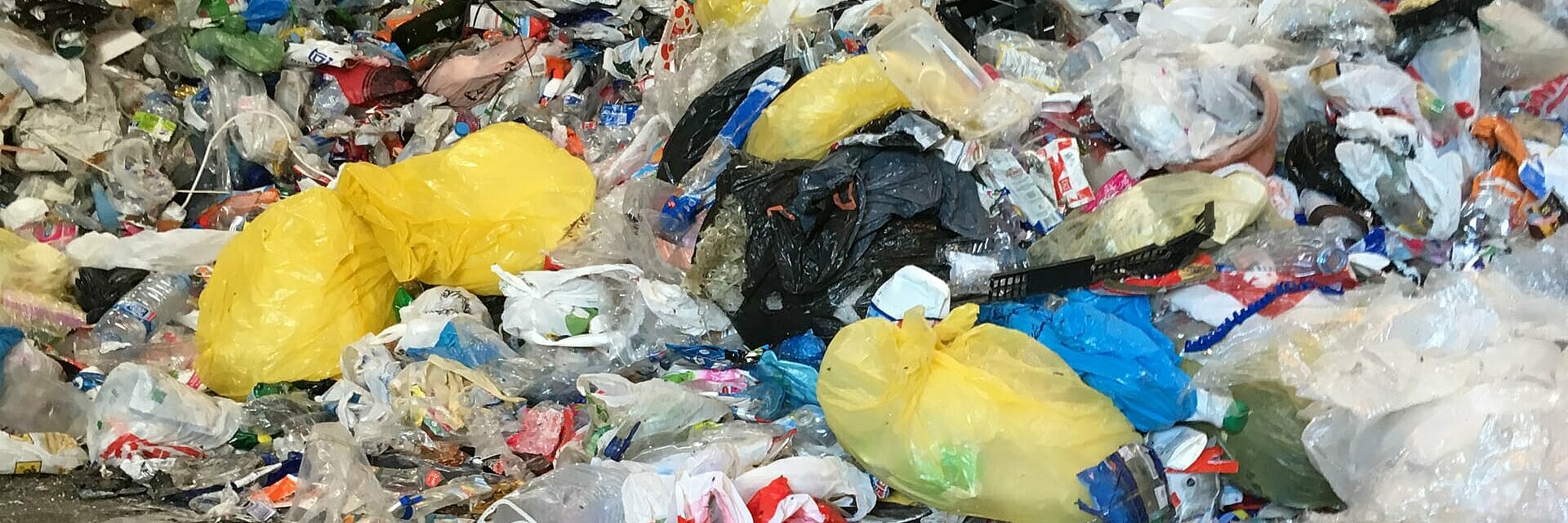
PACKAGING
Sorting of post-consumer packages
All core components of the magnet and sensor-based sorting systems for post-consumer packages plant, with throughput rates of 8 to 30 tonnes per hour
The sorting of packaging from local household collections covers a wide spectrum: Various plastics, metals, paper, commingled, contaminated waste is collected and mixed together, then fed into a sorting plant designed specifically for this mix of materials.
These must not only satisfy collection and recycling rates. Also associated is a contractual obligation for increased product yield - and additionally, the challenges of the required export and offtake quality are continually increasing, because quality leads to recycling reliability.
One of the most important sorting tasks at present is therefore to achieve high yield and high purity among the packaging films, since they are increasing, and, primarily composed of polyethylene, plus a high purity of products sorted by plastics types. Additionally, film, paper and cardboard from transport packaging are occurring in the collection of sales packaging and must be sorted accordingly.
In modern systems the film is pre-sorted using air separators (1 or 2-stage) or using ballistic separators. Since the film has a very low surface weight, sorting with sensors on acceleration belts is often inefficient. Here the UniSort Film sorting system can provide better separation of lightweight film (PE) and paper. Using a closed airflow, this sorting machine accelerates the flat film and paper components (2D fraction) at belt speeds of up to 4.5 m/s and sorts very accurately at these higher throughput rates. This improves the yield and purity of the products.
Alongside this are the typical tasks of separating drinks cartons (FKN/liquid cartons) using NIR detection upstream of the eddy current separator. The objective is to create commingled carton waste as a mono-fraction for the paper fibre industry.
Within the 3D sorting lines, defined plastic concentrates are subsequently separated – depending on the route to market and priority – to recover the PET bottle and tray, PO bottle, cups and shells in polystyrene and materials in polypropylene (PP) plastics types. Optionally, similarly mixed polyolefins (MPO) and mixed plastics can be sorted within the 3D sorting line. The sorting and recovery of these fractions is done using the NIR detection function of our UniSort PR.
Even special functions such as detecting or ‘suppression’ of biopolymers (e.g. PLA, PHB) in the film fraction or of silicone cartridges in the PE bottle items, can be performed effortlessly by the UniSort PR thanks to its high-resolution IR camera, thus reducing the contaminant content in the product significantly.
Special tasks, e.g. recovery of black, recoverable packaging (e.g. flowerpots in polyolefins PE/PP), are mastered easily with our UniSort Black at the end of the sorting line – which is where the previously undetectable valuable residues are found. You therefore increase your product yield while also reducing the proportion of residual sorting waste. Thanks to its clever design, this sorting machine can detect either light or dark objects and sort them out from the waste flow. Post-sorting cleaning (manual or automatic) can be provided if required to further increase purity.
More and more sorting plants have fixed offtake structures into the recycling system, and wish to monitor online the product quality of PO mix or polystyrene, for example, in order to reduce the complexity of quality control and to build trust with the purchaser. Our UniSort Analyser uses sensors to deliver the requisite data in order to determine the composition and purity of the material to be sorted. Using the same technique, refuse-derived fuels can be monitored for water content, calorific value and composition.
The recovery of magnetic iron parts (tinplate) from packaging and false sortings across the entire range of sizes is a standard task for the STEINERT UME self-cleaning overhead suspension magnet unit. And for automated sorting of packaging in aluminium (“Green Dot” fraction 420) and other non-Fe metals we can naturally offer you powerful solutions: the STEINERT CanMaster – or our STEINERT EddyC eddy current separator with a powerful pole system specially designed for the <30 mm grain size range.
Your benefits:
- All core combinations of sorting systems from a single source
- Sorting widths from 1 m to 2.8 m available
- New machine design with optimal sorting of film and paper
- Fe and non-Fe metals, recovery with the best magnet and eddy-current technology available
- Special tasks for dark polymers, solutions with extended IR technology
Downloads
Solution Guide Post-Consumer Packages



